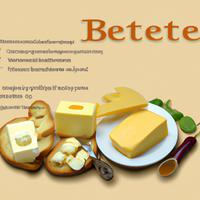
1 serving (100 grams) contains 250 calories, 10.0 grams of protein, 15.0 grams of fat, and 20.0 grams of carbohydrates.

Log this food in SnapCalorie

Nutrition Information
Calories |
595.2 | ||
|---|---|---|---|
% Daily Value* |
|||
| Total Fat | 35.7 g | 45% | |
| Saturated Fat | 21.4 g | 107% | |
| Polyunsaturated Fat | 0 g | ||
| Cholesterol | 95.2 mg | 31% | |
| Sodium | 952.4 mg | 41% | |
| Total Carbohydrates | 47.6 g | 17% | |
| Dietary Fiber | 2.4 g | 8% | |
| Sugars | 4.8 g | ||
| protein | 23.8 g | 47% | |
| Vitamin D | 119.0 mcg | 595% | |
| Calcium | 476.2 mg | 36% | |
| Iron | 2.4 mg | 13% | |
| Potassium | 238.1 mg | 5% | |
* Percent Daily Values are based on a 2,000 calorie diet. Your daily values may be higher or lower depending on your calorie needs.
Food Attributes
Source of Calories
About Open-faced sandwich with butter and cheese
An open-faced sandwich with butter and cheese is a simple yet satisfying dish commonly enjoyed in various European cuisines, particularly in Scandinavian and Eastern European countries. It consists of a single slice of bread, typically rye or whole grain, spread with a layer of butter and topped with slices of cheese. The sandwich is versatile, often paired with fresh vegetables or herbs to enhance flavor and nutrition. Nutritionally, the sandwich provides protein and calcium from the cheese, essential for bone health, along with energy from the carbohydrates in the bread. Butter contributes to taste but is high in saturated fats, making moderation key for heart health. Opting for whole grain bread can boost fiber content, supporting digestion. This straightforward preparation makes it a popular choice for breakfast or a light snack, offering a balance of indulgence and simplicity.



